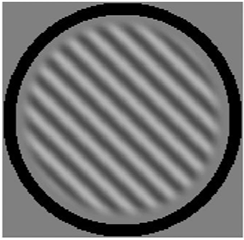Current Research areas
Interocular suppression and visual awareness
During interocular suppression, signals from one eye inhibits the signals from the other eye. This suppressive process is best demonstrated by binocular rivalry, where the observer perceives alternations between the different images presented to each eye (see example right). I study the underlying mechanisms of interocular suppression, how stimulus statistics (natural or artificial) contribute to visual awareness and what these findings can teach us about better experimental and product designs.
Example articles:

Sensory plasticity
I study sensory plasticity in two ways. The first approach explores how the statistics of naturalistic experience shape sensory perception, visual awareness and attention. The second explores causation by investigating the shorter-term effects of this experience on sensory perception.

Example articles:
-
Monson et al. (2013). Are auditory percepts determined by experience? PLoS ONE
-
Press release: Sensory processing-in a virtual Kodak Hall, 2022
(see image of virtual Kodak Hall above)
Special population work
I study how sensory experience affects perception in special populations, because this line of investigation provides further insight into the functioning of the visual system and has the potential to generate translational benefits for the affected populations. Some ongoing projects include the NeuroBeA autism project with KKH and NTU, and the MIMOSA autism project with Duke-NUS and IHPC.